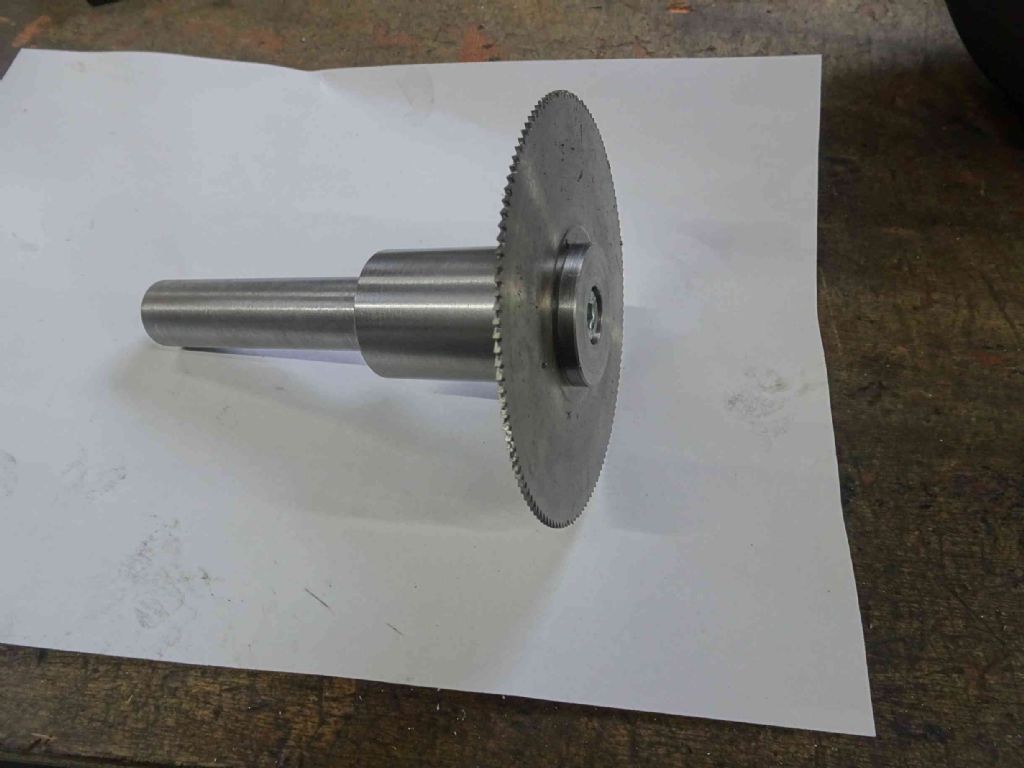I'd probably still be using my first portable 'phone – a Nokia I think – if damp on a very wet holiday hadn't destroyed the liquid-crystal display. I'd had it only about 12 years, and had replaced the battery a year or so before its demise.
it was not one of those near-brick-size things but the next type on. Still slightly bulky, but lighter and easier to use than the so-called "smart"-'phone.
I found a mail-order instrument-battery company, in this country too, and the repair was easy, though. I was surprised to find the battery was a set of AAA-size cells in shrink-sleeving.
+++
Now then… What Did I Do Today?
A short little turning task for the Worden T&C Grinder, then another exploration of the Drummond shaper to find its elusive serial number. I've been advised to look where I'd not expected – on the slideways – so will do tomorrow. Oh today – it's already gone mid-night.
'
Then used the BCA jig-borer for the first time in anger after spending several days making it a mounting for Myford chucks.
I needed to put two spanner flats on a special nut, in mild-steel, 1" dia. Easy you might say, on a jig-borer… mill down one facet, rotate the lot 180º, mill the other facet, rotate and trim to finish as necessary. All lovely and symmetrical.
No – I was distressed by a very large eccentricity I could not track down. My first thought was my mistake in swapping from the chuck in the lathe to one on the BCA, but even when I used the same chuck on both machines for a second nut I still had that huge run-out. I had to cut the facets individually, losing part of the rotary-table advantage.
I did not throw the first nut away. When I measured it, I found it is actually useable, and will keep it as a spare. It is the cutter-locating part of the T&C Grinder's slitting-saw attachment.
'
Oh what a battle though! I started just before my Inside Science tea-break finished (5pm), but by the time I could prepare to come indoors for tea, poor Brunnhilde was in her magic sleep up there on the mountain. Loge was setting the barrier ring of fire round her, while I was de-burring the nuts.
'
So far I have not detected sufficient error in the mounting for 0.04" – forty thou! – run-out of the work-piece.
Is the chuck leaning over, rotating the work on the surface of an imaginary cone? I fear this will not be easy to locate, let alone cure.
It's a still fairly new, 4-inch 4-jaw self-centring TOS chuck with a remarkably deep body considering the spindle thread is outside, on a back-plate. I do wonder what these big heavy chucks do to a small lathe like my Myford 7. It would be more appropriate on the Harrison L5, whose own spindle nose is not much larger than the Myford's. However, before blaming the chuck I will test the adaptor assembly more thoroughly. A massive chuck screwed to a small adaptor held in a shallow recess by just M4 screws is not conducive to stability.
 JasonB.
JasonB.




 to create a parking-space for my EW lathe on its trolley; presently partially under the kitchen work-top.
to create a parking-space for my EW lathe on its trolley; presently partially under the kitchen work-top. 

















